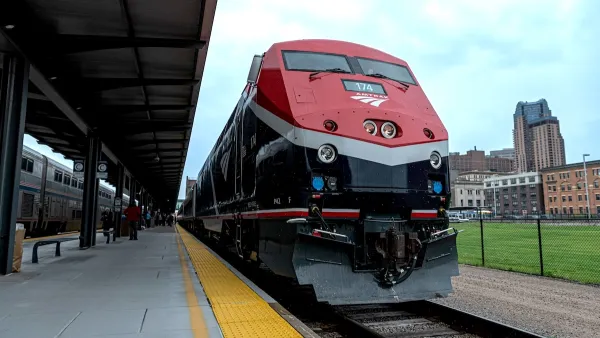For the first time, Rhode Island voters will be tested on their support for public transit by whether they approve authorizing $35 million for Mass Transit Hub Infrastructure Bonds on Nov. 4. In addition to hubs, statewide bus service is targeted.
Previously, voters supported transportation measures that included funds for commuter rail and buses, but Question 6 in November is exclusively for public transit.
"The money would largely be invested in building and modernizing existing and new transit hubs — with a primary focus on building a statewide multi-modal transportation center adjacent to Providence Amtrak Station," writes of Transportation for America.
The intended purpose of the funds would be to improve access to multiple intermodal sites, key transportation, healthcare, and other locations. The funds would be provided to the Rhode Island Department of Transportation. [Ballotpedia]
According to Gov. Lincoln Chaffee, bond funds "would also be used to pursue plans for two other downtown transportation hubs, one at Kennedy Plaza and another at the Garrahy Judicial Complex, as well as to upgrade RIPTA’s bus system across the state," writes Richard Salit of the Providence Journal.
Opposing the measure is the R.I. Center for Freedom and Prosperity. Mike Stenhouse of the group told WPRI that "the state cannot take on any more debt, saying if the state does, it should only be to rebuild roads and bridges, not mass transit."
The "Yes on 6" campaign is backed by a broad coalition of groups (listed on their homepage) and is organized by Grow Smart Rhode Island.
Other bond measures on the ballot include $125 million to construct a new College of Engineering building, $53 million for environmental and recreational purposes, and $35 million to fund artistic, historic and cultural centers.
T4America Blog is covering many state transportation ballot measures to be decided Nov. 4. For more information, be sure to check out their Transportation Vote 2014 page.
FULL STORY: Rhode Island’s first statewide ballot measure to support transit

Planetizen Federal Action Tracker
A weekly monitor of how Trump’s orders and actions are impacting planners and planning in America.

Congressman Proposes Bill to Rename DC Metro “Trump Train”
The Make Autorail Great Again Act would withhold federal funding to the system until the Washington Metropolitan Area Transit Authority (WMATA), rebrands as the Washington Metropolitan Authority for Greater Access (WMAGA).

DARTSpace Platform Streamlines Dallas TOD Application Process
The Dallas transit agency hopes a shorter permitting timeline will boost transit-oriented development around rail stations.

LA County Creating Action Plan to Tackle Extreme Heat
Los Angeles County is creating a Heat Action Plan to help communities stay safe during extreme heat, with steps like adding more shade, improving buildings, and supporting the neighborhoods most at risk.

Maryland Plans Quick-Build Complete Streets Projects
The state will use low-cost interventions to improve road safety in five Maryland counties.

Downtown Los Angeles Gears Up for Growth
A new report highlights Downtown L.A.’s ongoing revival through major housing projects, adaptive reuse, hospitality growth, and preparations for global events in the years ahead.
Urban Design for Planners 1: Software Tools
This six-course series explores essential urban design concepts using open source software and equips planners with the tools they need to participate fully in the urban design process.
Planning for Universal Design
Learn the tools for implementing Universal Design in planning regulations.
City of Charlotte
Municipality of Princeton
Roanoke Valley-Alleghany Regional Commission
City of Camden Redevelopment Agency
City of Astoria
Transportation Research & Education Center (TREC) at Portland State University
US High Speed Rail Association
City of Camden Redevelopment Agency
Municipality of Princeton (NJ)



























